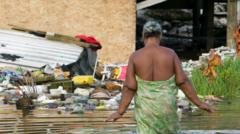In rural areas of Africa, venomous snakes pose a significant danger, leading to approximately 120,000 deaths annually among vulnerable populations. A poignant case highlights the struggles of a young girl who endured a snakebite, underscoring the dire need for better medical resources and awareness.
Venomous Snakes: A Deadly Threat to Rural African Communities

Venomous Snakes: A Deadly Threat to Rural African Communities
Every year, millions in Africa fall victim to snake bites, with a staggering death toll and severe health consequences due to inadequate medical access.
In Africa, a continent rich in biodiversity but also facing pervasive challenges, venomous snakes have become a serious threat to communities, especially in rural areas. Each year, an estimated five million individuals are bitten by snakes, resulting in roughly 120,000 fatalities and many more losing limbs to amputation. This crisis disproportionately affects impoverished populations who often lack access to swift medical treatment.
A recent incident in Kenya illustrates this terrifying reality. Eleven-year-old Beatrice Ndanu Munyoki was tending to her family's goats when she was bitten by a snake. Panic-stricken, she rushed to her father, who quickly fashioned makeshift tourniquets before transporting her to the nearest health facility via motorcycle taxi. Unfortunately, the local hospital lacked the necessary antivenom, delaying critical treatment.
Despite her eventual transfer to another hospital, Beatrice suffered severe complications, leading to the amputation of her finger—a devastating outcome that her father, David Mutunga, described with heartbreak. The growing encroachment of human settlements, combined with climate challenges, means that snakes and humans are increasingly competing for the same resources, resulting in increased encounters and conflicts.
With the risk of snakebites extending beyond physical harm to encompass a broader humanitarian challenge, immediate attention is needed. There is a pressing need for enhanced medical infrastructure, educational outreach on snake safety, and efforts to mitigate environmental factors that exacerbate human-snake interactions. The plight of Beatrice and many like her serves as a stark reminder of the ongoing struggle against this silent yet deadly threat.




















